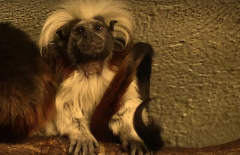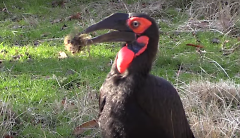Amid years of attendance growth, John Ball Zoo is on its way to expansion under a new master plan recently approved by zoo directors.
The plan will cost around $50 million over the next 25 years. The funds will go toward new changes that will affect all parts of the zoo, from the parking lot to the land on which the zoo is still expanding. Funding will come in the form of private donations to the zoo, which recently became a nonprofit.
Upcoming changes will feature improved experiences for visitors and the animals, says Andy McIntyre, John Ball Zoo’s director of animal programs, conservation and education.
“A couple of those first projects are really things to increase accessibility within the zoo for visitors,” McIntyre says. “So more experiences, new engagement opportunities, and also an easier experience to navigate the hillside that we’re on.”
He says an immediate project in the works is the completion of a pathway around the recently completed tigers exhibit in the forest realm of the zoo, and the integration of other exhibits into that space. There are plans to build another hillside path with primate enclosures on each side, connected by overhead tunnels so the animals can move freely.
A plan to renovate the park entrance is also underway, with the addition of black bear enclosures on each side, connected by a bridge that would allow the bears to traverse back and forth. The recent addition to the tigers enclosure features a similar pathway for the tigers to move between two main spaces.
This new plan comes on the heels of the zoo becoming a 501(c)3 nonprofit organization in January 2014. The zoo was originally owned by the city of Grand Rapids, and then by Kent County. John Ball will remain a public-private partnership, by which the land belongs to Kent County but the organization is run as a separate entity.
“Over the years one of the things that we’ve come to realize is to really look at the zoo as one entity, so that all of those functions are driven by one vision, one mission, one business plan, it was going to be best to actually operate as a nonprofit,” McIntyre says.
Most of these changes are behind the scenes, not visible on the visitor end. McIntyre says the nonprofit status unifies all aspects of zoo operations --employment, the animals, the facilities, marketing, accounting and visitor services -- under the same banner.
Becoming a nonprofit has symbolized a fresh start for the zoo, McIntyre says.
“We like to say that we’re 125 years old, but we’re two years young,” he says.
John Ball Zoo still receives funds from the Kent County budget, but around 74 percent of its expenditures come from the business operations of the zoo and fundraising. Funding used to be managed by the Zoo Society nonprofit, but that task now belongs to John Ball.
“That means a new opportunity, but new challenges come with that as well,” McIntyre says.
For example, he said, the zoo is currently fundraising to purchase a new x-ray machine for its on-site animal hospital.
Last year, John Ball received a record 523,000 visitors – nearly half of the Detroit Zoo’s intake, but twice that of Binder Park Zoo. McIntyre says the spike in attendance has fueled the need to keep improving and expanding zoo experiences.
“I think the community is going to be very proud to see some of the things that we’ve done and have continued to do in the future,” he says.
Click this link to view the zoo's full masterplan for upcoming projects.
The Rapidian, a program of the 501(c)3 nonprofit Community Media Center, relies on the community’s support to help cover the cost of training reporters and publishing content.
We need your help.
If each of our readers and content creators who values this community platform help support its creation and maintenance, The Rapidian can continue to educate and facilitate a conversation around issues for years to come.
Please support The Rapidian and make a contribution today.

